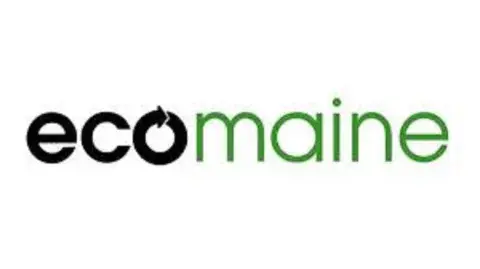
As an alternative to NRRA’s usual fall bus tour, NRRA Staff and municipal members joined ecomaine staff on January 13 for a private virtual tour of their Portland, Maine facilities followed by a question and answer session about their processes. In one campus, ecomaine runs a single-sort facility since 2006, offers food waste recovery, operates a waste-to-energy plant, and also has room for a landfill on site.
Ecomaine’s goal is the reduction of waste generated; reuse of resources; recycling and employing materials back into the marketplace; composting or digestion of organic waste; creating electricity via waste-to-energy; and landfilling as a last resort. They are a leader in public awareness to provide long-term public waste solutions and serve 450,000 people in 70 communities in southern and central Maine.
Ecomaine switched from dual sort to single-source recycling (when you place all recyclables in one bin at home) in 2006 to make recycling more accessible and efficient for residents, especially for curbside communities like Portland, ME. Recyclables are collected and moved by truck to the ecomaine tipping hall floor where they are dumped for inspection. Staff inspect for contamination before loaders pick up the material to put it on a conveyor belt. Additional staff remove contaminants from the stream as it goes by on a belt. Magnets remove any ferrous metal. Puffed air separates the cardboard from the mixed paper. Plastics are sorted by an optical sorter. Material is fed through the system twice to catch the most contaminants.
When ecomaine switched from dual sort to single sort, they cut in half the number of trucks sent out in the city to pick up curbside recyclables, and the program became more affordable. Single sort recycling took off for the first decade but tonnage has been down 19% since 2015. They are hoping the market rebounds so that this program is at maximum efficiency.
The waste-to-energy plant produces ten times the electric power than energy produced from a landfill. A crane turns piles into the hopper to feed a 2000-degree fire and the material is reduced by 90% into ash. This heat produces steam to turn a turbine and make electricity which powers not only ecomaine’s facilities but the equivalent of 150,000 area homes. Ecomaine uses a variety of methods to reduce pollution so that there is 96% water vapor released from the stacks.
Ecomaine is completing a solar panel array this summer on 30 acres of capped landfill. They also have a fleet of electric cars powered by the waste-to-energy plant. In 2020, they completed a bin inspection in targeted areas where the staff noticed contamination. Due to the public outreach, they were able to increase a positive recycling rate through TV ads, radio, and social media.
NRRA thanks ecomaine for an engaging and informative tour. To learn about ecomaine’s work, visit: https://www.ecomaine.org.
